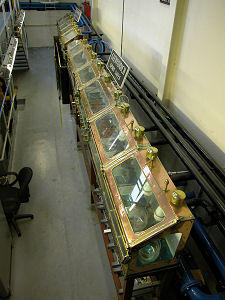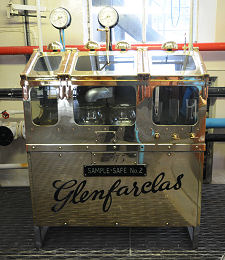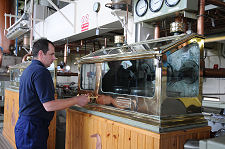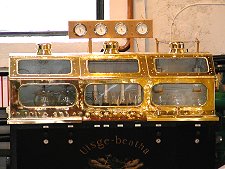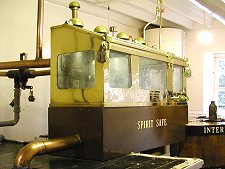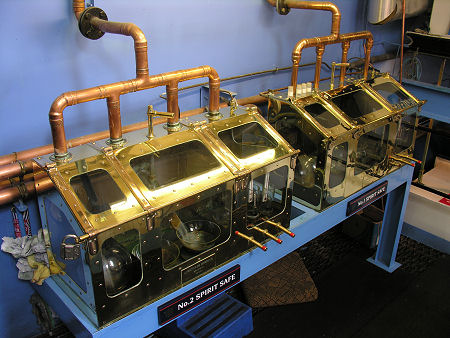 Spirit Safe at Glen Moray Distillery |
You can think of the spirit safe as the "mission control" of the still room, though one whose beautiful brass-bound and padlocked case might be more at home overseeing a space flight organised by Jules Verne than by NASA.
The spirit safe is designed to allow the distiller to analyse and manage the destination of the product of the spirit still as it emerges from the spirit condenser, but without ever coming into contact with the spirit itself. Its origins date back to 1823 when the duty laws were changed to allow small Highland distilleries to compete on equal terms with the large Lowland distilleries. The effect was to bring within the law a lot of distillers who had previously operated illegally.
The price paid for the fairer duty laws was rigorous enforcement of them, and one of the main control mechanisms was the spirit safe. This prevented anyone tapping off (and so avoiding paying duty on) the spirit at is most vulnerable point: as it emerged from the still and before anyone had measured how much of it there was. (Continues below image...)
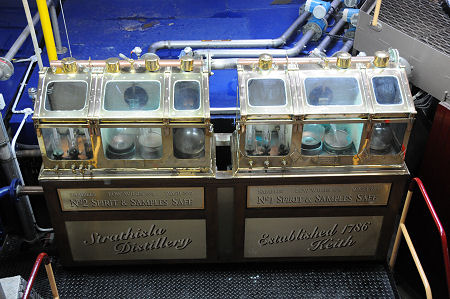 Spirit Safe at Strathisla Distillery |
This explains why spirit safes carry large and obvious padlocks, and why all the manipulation and measurement takes place behind its glass panels, using controls on the front of the spirit safe. Until 1983 the only keys to the padlocks were held by the local officer from the Customs and Excise, who also measured how much spirit was produced. Since then the keys have been held by the distillery manager, and Customs and Excise ensure compliance by analysing and comparing returns across a range of distilleries.
The first liquid to emerge from the spirit condenser as the spirit still is heated is the undesirable foreshots, and these are directed from the spirit safe to the low wines and feints receiver for re-distillation. But gradually the alcohol content reduces and what emerges is the spirit that will end up as Scotch Whisky. The distiller has to judge the right moment to redirect the flow of product to the spirit receiver instead of the low wines receiver. This is when the alcohol content, measured by a hydrometer in the spirit safe, falls to 75%: or when the emerging spirit no longer turns water cloudy, another test conducted remotely inside the spirit safe.
The alcohol content of the emerging liquid continues gradually to fall during the run. When it reaches a point between 70% and 60% alcohol by volume, again as measured by a hydrometer within the spirit safe, the flow is switched away from the spirit receiver and back to the low wines and feints receiver, again for re-distillation. The precise point at which this switch takes place depends on the character of the whisky being produced: but for a particular whisky this will always happen at the same point in the run.
The Spirit is directed from the spirit safe to the spirit receiver (or spirit vat).
It is then used to fill casks for maturation in the warehouse.
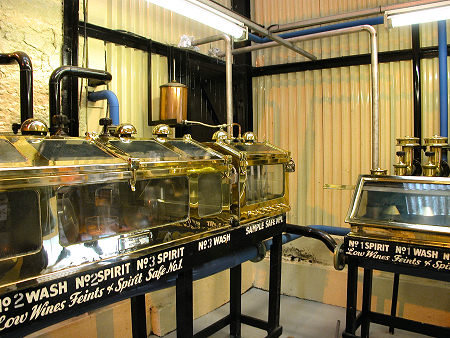 Some of Dalmore Distillery's Collection of Spirit Safes |

|
|
|
Making Malt Whisky: |
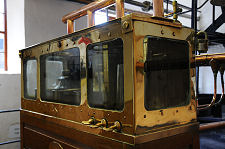 Spirit Safe at Pulteney |
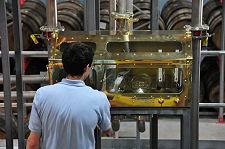 Operating the Safe, Kingsbarns |
 Spirit Flowing in Spirit Safe |
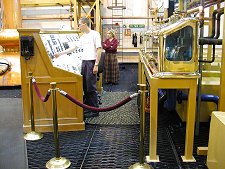 Mission Control, Glenmorangie |
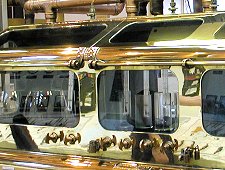 Glenmorangie Spirit Safe in Detail |
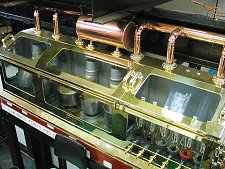 Highland Park Spirit Safe |
